|
|
|
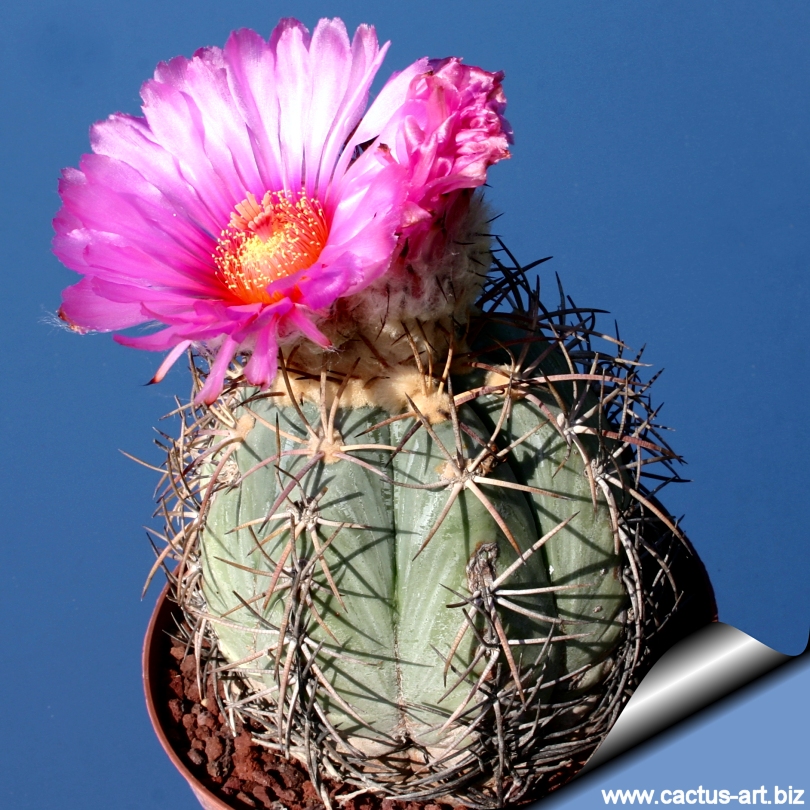
Echinocactus horizonthalonius (a plant from Las Tablas)
|
|
Description: Echinocactus horizonthalonius is
a relatively small barrel cactus that normally grows unbranched.
Stems: Pale, grey-green to bright glaucous grey-blue, flat-topped
or hemispheric, and deep-seated in substrate, spherical with age or
stoutly short cylindrical, stem slowly growing up to 30 cm tall, 15-20
cm in diameter or more. The
apical meristem is protected by whitish-yellow wool, which
shades developing flower buds and fruits.
Ribs: 5 to 13 ribs (mostly 8), vertical to helically curving
around stem, rib crests broadly rounded, uninterrupted or slightly
constricted between areoles.
Areoles: Round, full of white wool when young.
Spines: 5 to 10 (more frequently 8) per areole, loosely
projecting or strongly decurved, pink, grey, tan, or brown, strongly
annulate-ridged, subulate, ± flattened, glabrous, generally not hiding
stem surface
Radial spines: 5(-8) per areole, similar to central
spines;
Central spines: 1(-3) per areole, 18-43 mm, longest spine usually
descending, straight or decurved throughout its length.
Flowers: Pinkish-red , 5 to 7 (9) cm in diameter; stigma
lobes pinkish to olive.
Blooming season: From the end of March to late May (occasionally
on September).
Fruit: Red or pink, oblong, fleshy or semi dry and ephemeral,
containing black seeds, indehiscent or weakly dehiscent through basal
abscission pore. Once fruits are open, the rough black seeds (2 mm in
diameter) lie on the wool atop plants, with seeds rolling off between
the ribs.
|
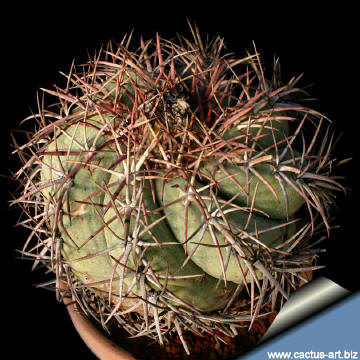 |
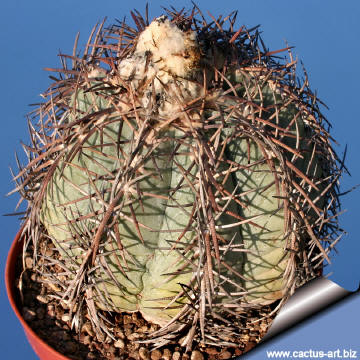 |
|
. |
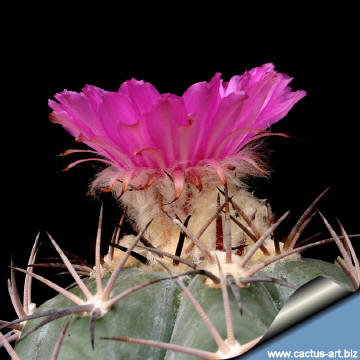 |
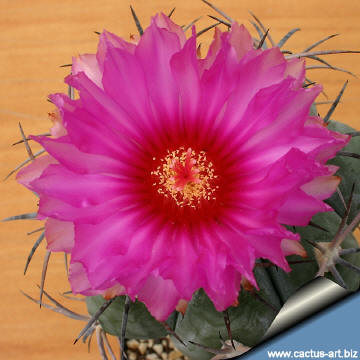 |
|
This is the smallest of the Echinocactus, the only one that will
bloom
as a small container plant (starting at about 5-7 cm in diameter). |
|
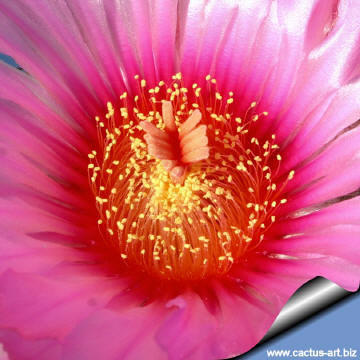 |
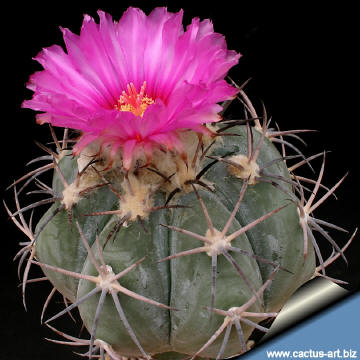 |
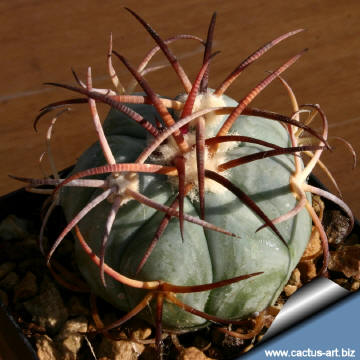 |
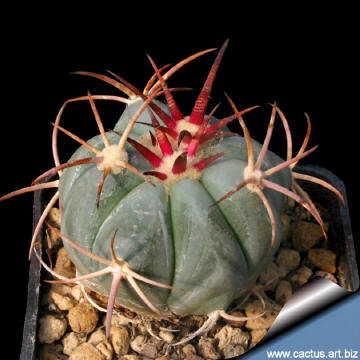 |
|
. |
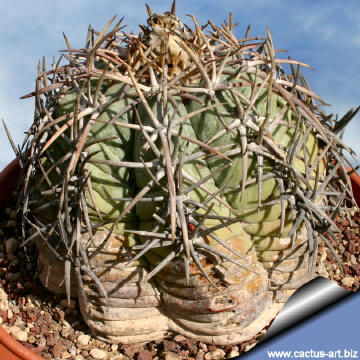 |
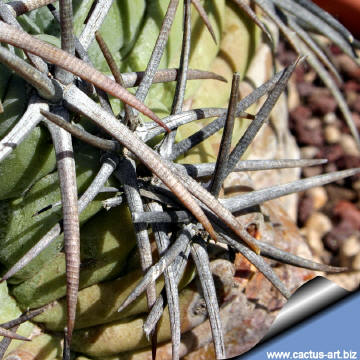 |
|
Advertising
|
|
|
|
|
|
|
Family:
Cactaceae (Cactus
Family)
Scientific name:
Echinocactus horizonthalonius Lemaire,
Published in: Cact. Gen. Sp. Nov. 19. 1839.
Common Name: Devil's-Head
Cactus, Blue barrel cactus
Origin:
Mexico (Nuevo Leon, San Luis Potosi), USA (Arizona, New Mexico, Texas)
Echinocactus horizonthalonius is a species which covers a large habitat
range, from the Big Bend National Park in Texas almost as far south as
Mexico City.
Habitat: Rocky slopes, at 600-1700(-2500) m. This Echinocactus
comes from very arid areas receiving only 20-30 cm of water a year, with
harsh heat and sun. Most populations
come from limestone soils.
Conservation status: Listed in
CITES appendix 2.
Synonyms:
- Meyerocactus horizonthalonius
|
|
Remarks:
Because of the slow growth rate of plants, it appears that Echinocactus horizonthalonius may have a life-span of 75-100 years.
The Sonoran Desert populations of Echinocactus horizonthalonius have
been segregated as var. nicholii, but are relatively similar to plants
in New Mexico and the westernmost part of Texas.
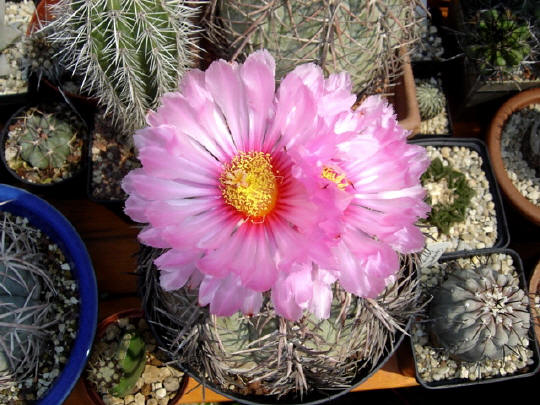
Photo & © copyright by Gianluca Scibilia
(Italy)
|
|
|
|
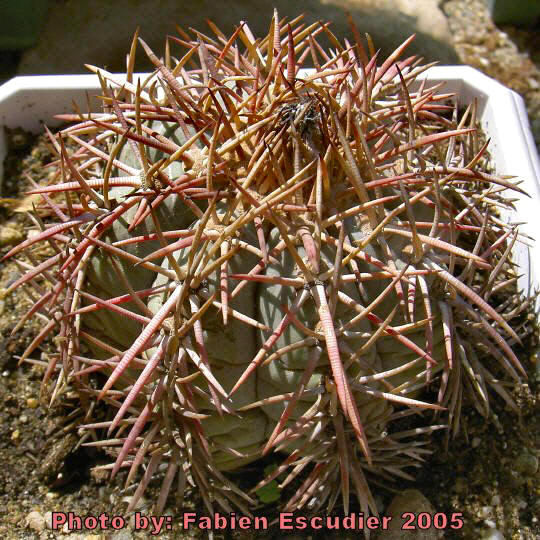
The body of this plant is a chalky blue colour, and some forms have
magnificent spines.
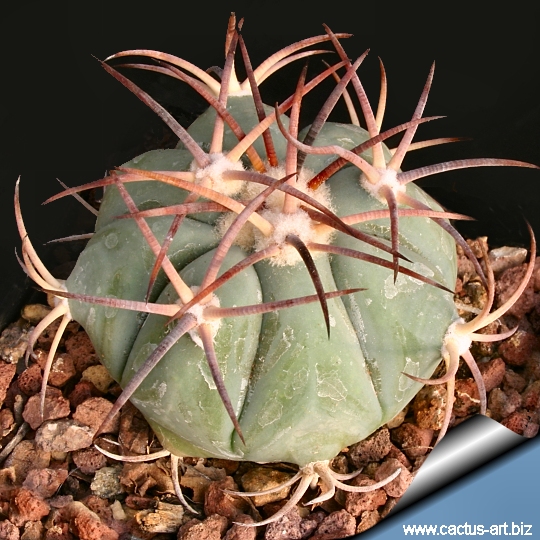
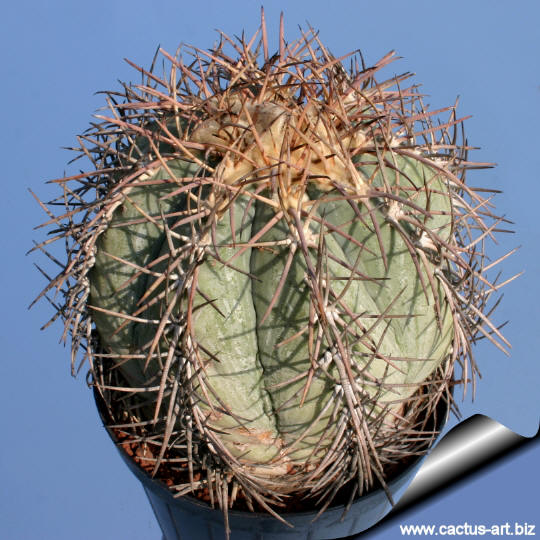
Cultivation:
This species is not the easiest to cultivate, requiring the maximum
amount of sun and care with watering, as it can easily rot. Keep this
plant dry in winter at a minimum temperature of 0°C (but it is hardy as low as -10°
C). It prefers a very draining
mineral
compost, and does better with some limestone
in the soil mixture. The plant tolerates
extremely bright situations, but enjoy some shade during
the hottest part of the day in summer.
Propagation: Seeds (it usually doesn't produce offsets),
grafting.
Seed
Collecting: Permit
fruits to
ripen:
Fruit
must be significantly
overripe before harvesting seed.
Clean and dry seeds


|
|